Alex caught up with Alison Glass at QuiltCon to discuss how Alison got started in the industry, what she considers her "light bulb" moment, and what she's doing now.
Click here to learn more about Alison's book:
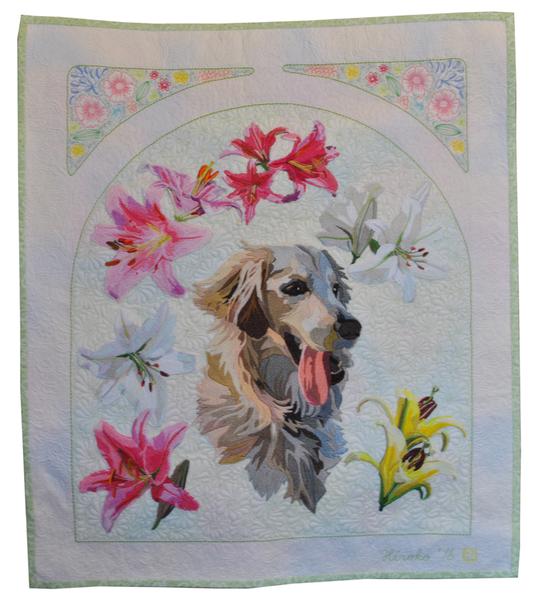
This quilt really shows off Sue Nickels' quilting abilities. Feathers galore!
Star Members can watch Sue and her daughter, Ashley, in Show 1808: A Quilting Family from Vintage to Modern, which also features a visit with Roderick Kiracofe and his wonderful quilt collection.
AlphabetFeathersbySueNickels - 36 Pieces Non-Rotating
AlphabetFeathersbySueNickels - 100 Pieces Non-Rotating
AlphabetFeathersbySueNickels - 289 Pieces Non-Rotating
AlphabetFeathersbySueNickels - 36 Pieces Rotating
AlphabetFeathersbySueNickels - 100 Pieces Rotating
AlphabetFeathersbySueNickels - 289 Pieces Rotating

Original Photo: Gregory Case
This quilt really shows off Sue Nickels' quilting abilities. Feathers galore!
Star Members can watch Sue and her daughter, Ashley, in Show 1808: A Quilting Family from Vintage to Modern, which also features a visit with Roderick Kiracofe and his wonderful quilt collection.
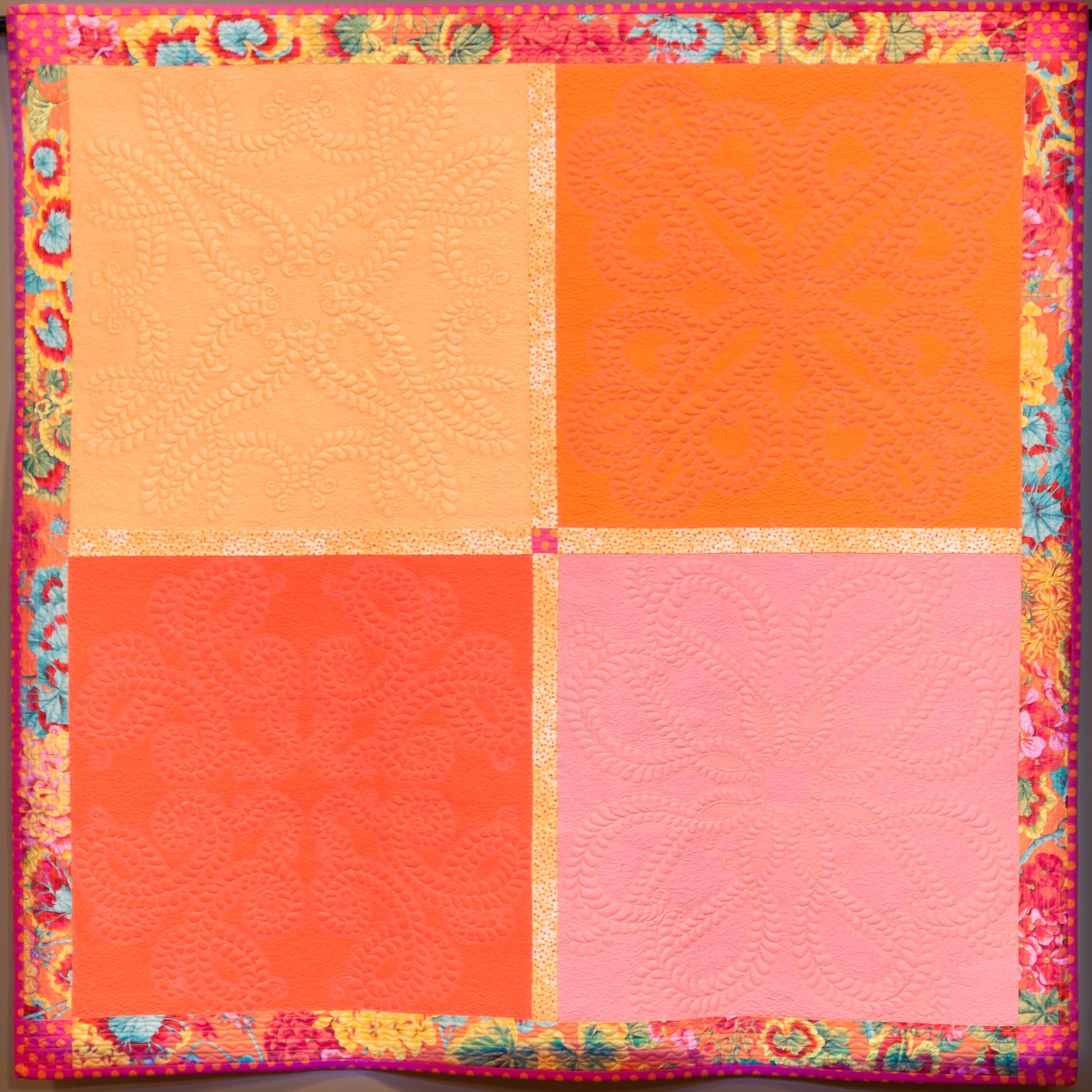
Original Photo: Gregory Case
Alex talks to Margaret Jankowski about The Sewing Machine Project. Formed in 2005, it is a non-profit organization who collects and distributes sewing machines to groups committed to using the machines to provide opportunities to create, learn new skills, build self confidence, and contribute to their own livelihoods and the well being of their families and communities. Since 2005 they have distributed over 2000 sewing machines, helping people become self-sustaining through sewing. They work locally, nationally and internationally.
Click here to see photos from The Sewing Machine Project around the world.
Enjoy some photos of the amazingly hard-working volunteers and participants in The Sewing Machine Project as they travel the world to spread the joy of sewing. Click here to watch a Skype interview of Alex with the head of The Sewing Machine Project, Margaret Jankowski.
 |
The Sewing Machine Project was formed in 2005. It is a non-profit organization who collects and distributes sewing machines to groups committed to using the machines to provide opportunities to create, learn new skills, build self confidence, and contribute to their own livelihoods and the well being of their families and communities. Since 2005 they have distributed over 2000 sewing machines, helping people become self-sustaining through sewing. They work locally, nationally and internationally.
Pixels, Baby is a cheerful modern quilt from Ashley Nickels. Star Members can learn about Ashley's creative process in Show 1808: A Quilting Family from Vintage to Modern.
PixelsBabybyAshleyNickels - 35 Pieces Non-Rotating
PixelsBabybyAshleyNickels - 96 Pieces Non-Rotating
PixelsBabybyAshleyNickels - 300 Pieces Non-Rotating
PixelsBabybyAshleyNickels - 35 Pieces Rotating
PixelsBabybyAshleyNickels - 96 Pieces Rotating
PixelsBabybyAshleyNickels - 300 Pieces Rotating
![]()
Original Photo: Gregory Case
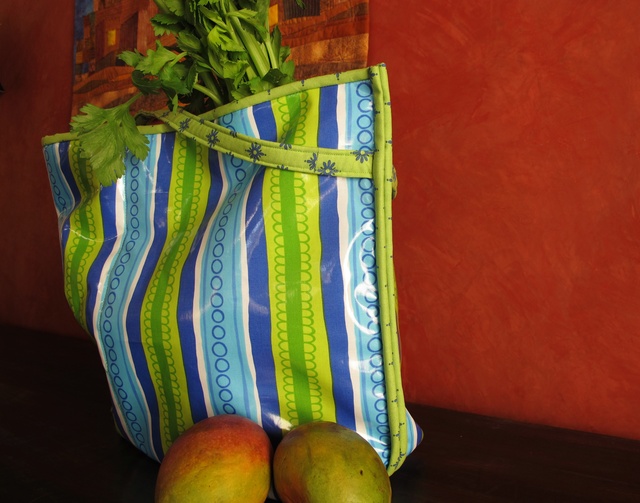
Sewing with Laminated Cotton by Lilo Bowman.
Walk into almost any quilt or fabric store nowadays, and you are sure to find a section dedicated to laminated cotton. These fun and colorful fabrics have been updated and offer the sewer many options. Most shops offering this fabric also have a range of patterns for using it, ranging from rain gear to totes to picnic blankets. Knowing how to work with this specialty fabric requires a bit of a "learning curve," and I'm here to help you glide through the process.
Laminated-cotton fabric comes in a range of widths, depending on the manufacturer, so keep that in mind when determining the amount you'll need for your particular project. I've found these fabrics in widths from 44" to 58" wide. Most laminated cotton drapes nicely, but some are a bit stiffer than others. Select a pattern that has simple lines, and avoid projects with too much shaping, especially when making raingear. I visit our local farmer's market on a weekly basis during the summer, so a tote was an obvious choice of project for me. I wanted my tote to be insulated in case I ran a few other errands before starting my trek towards home. My local quilt shop offered a pattern for an insulated market tote, so I'll be using my experience as a guide for you.
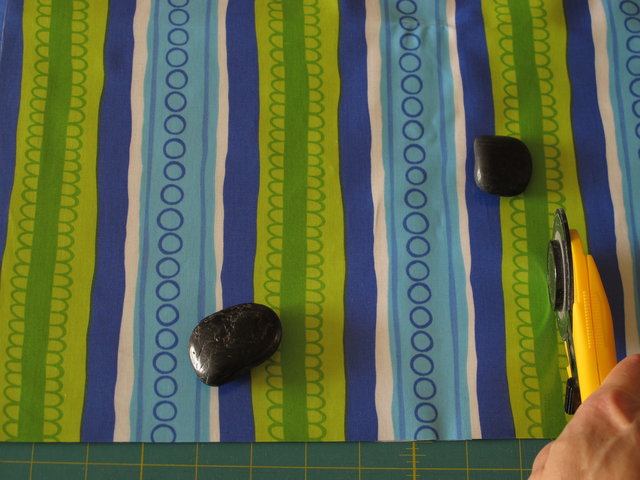
Cutting:
Cutting the pattern pieces was a breeze, as the fabric handled just like regular cotton. You'll want to be aware, however, that wherever you insert a pin, you'll leave a tiny hole, so substitutes are in order whenever possible! For large pieces, I used river rocks (or cans) to hold down the pattern pieces. Since I was sewing together three layers (laminate, insulation, and lining), I needed something to keep everything in place. Binding clips or clothespins worked great for this. They didn't leave marks and were easy to remove as I sewed up to them. The laminate keeps the cotton from raveling, so there is no real need to finish the edges, but I come from a garment-construction background, and some habits are hard to break.
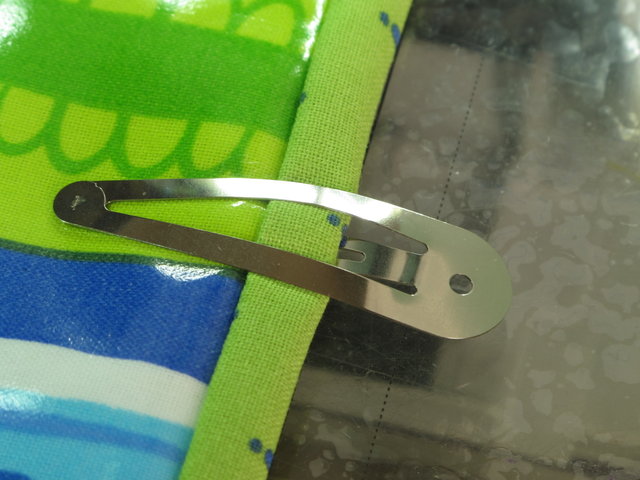
Interfacing:
Do not use fusible interfacing when working with laminated cotton. Between the heat of the iron and the moisture that it produces, your fabric will develop wrinkles that won't come out. If your pattern calls for interfacing, use the non-fusible type.
Ironing:
Do I even need to state the obvious? Do not get your iron near this stuff! It will make a mess of the fabric and your iron. If you absolutely must get out a wrinkle, use a hairdryer on a LOW setting and slowly move back and forth over (not on) the fabric.
Needles & Thread:
Remember, every stitch leaves a hole...forever!! My local quilt-shop owner suggested using either a size 12 or 14 sharp needle to make the holes less visible. I used a Microtex needle. As for thread, either a 40 or 50 weight thread is recommended. Whether you use cotton or poly thread doesn't seem to make a difference.
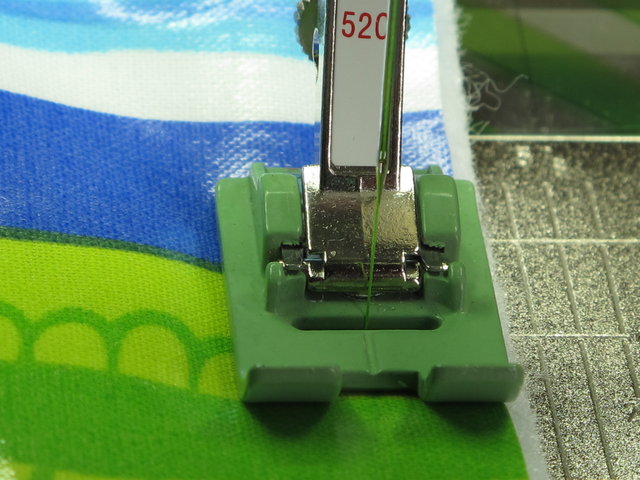
Bernina #52c
Sewing:
You'll want to increase your stitch length. The smaller the stitches, the more you stress the fabric and weaken the seams. On my Bernina, I used between a 3mm-4mm stitch length. My regular machine foot had a tendency to cause the laminate to bunch. Once I switched to the Bernina #52c or the #51 teflon foot, things went much more smoothly, although I did find it necessary to hold both ends of the fabric layers taut as I sewed to eliminate shifting.
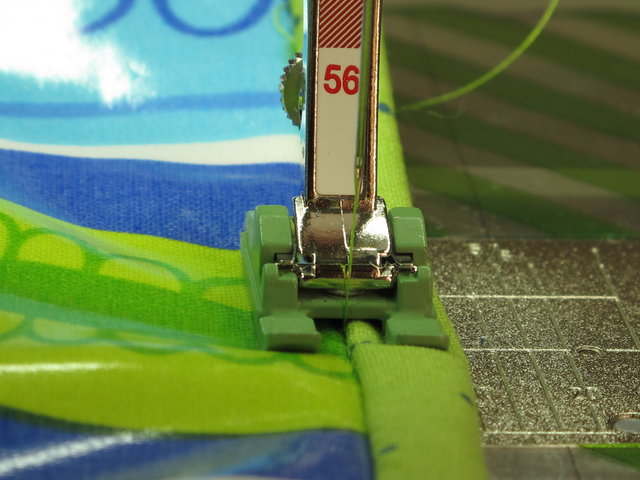
Bernina #56 Embroidery/Open Toe
If you are a speed demon where sewing is concerned, this is definitely the time to SLOW IT DOWN. A slow even pace will help the fabric glide along without any nasty puckers. Remember the mantra: Every stitch leaves a hole...forever!
A shopping tote is a perfect first-time project to practice on before delving into more complex patterns. If you make a couple of mistakes, no biggie. It's going to hold foodstuffs, after all. Just remember to take your time and have fun.
p.s. A little birdie just told me that on the blog, See How We Sew, by popular quilting instructor Laura Nownes, is a great idea for making a little roll-up bag for makeup brushes using laminated (vinyl-covered) fabric. Great gift idea! You might want to check it out here.
Click here to get the Roll Up Brush Case pattern.
Lilo
Photo Credit for all the photos in this article - Lilo Bowman
You'd have to say that quilting really runs in this family. Here are the beautiful quilts of Sue Nickels, her sister Pat Holly, and Sue's daughter, Ashley Nickels. We've even included a few from 2010, when Sue was the featured artist at Quilting in the Garden at Alden Lane Nursery, in Livermore, California.
You can learn more about this quilting family in the following shows: